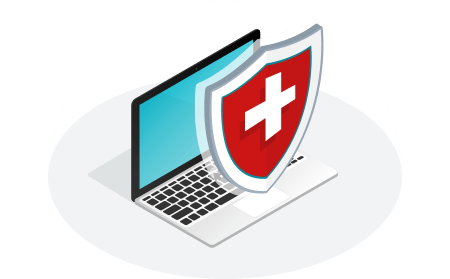Is This Website Safe?
Is This Website Safe? - website safety check is a question asked by many web users across the globe. Today the web is plagued by fake, fraudulent, and scam websites. Netizens, the world over, are clicking links cautiously -trusting nothing, wondering if this website link is safe or if this website is infected with some malicious programs.
Website Legit
Hackers are continuously generating ways to penetrate your company's network, steal your data, and use your website for malicious activity. Therefore, you must protect your website with an effective website reputation checker.
Consider the worst-case scenario… your company suffers a massive security breach. You lose your data, along with your customer's data, resulting in a loss of revenue. It's quite expensive to deal with a breach. Instead, invest your time and money wisely and understand how to perform a website security check.
8 tips when performing a Website Safety Check:
- Enable HTTPS
- Disable/Remove Unnecessary Plugins
- Backup Files
- Manage and Control File Integrity
- Use Comodo Web Inspector To Check If the Website is Secure
- Change Username
- Auto-Generate Passwords
- Update Plugins and Other Software
Check Website Reputation with Our Website Safety Checker
1. Enable https:// protocol
'S' stands for SECURE in HTTPS - It's a Secured Socket Layer, which defines encryption of a transaction between a browser and the server. A website with HTTPS is considered to be secure.
2. Update Your Software and Plugins
Software vendors continuously release updates that either add features or fix internal bugs. A bug fix identifies the glitches in programming that cause security vulnerabilities. Thus leaving the software open to attacks from cybercriminals.
This is the reason it is critically important to ensure your software is updated and is always free of vulnerabilities. Many plugins are available to fix these vulnerability issues for known malware. So updating software and plugs would help you secure your website.

3. Remove Unnecessary Plugins
If your website has unused or outdated plugins, you must make sure to remove them. Hackers exploit these outdated plugins and use them as a source to infect your website.
4. Backup Files and Data
Consider the damage done by a breach when your website is hacked. All of the data for the company and customers is destroyed and stolen. Can you afford the damage to the company's brand and revenue? It's best to have proactive measures to prevent such damage.
The simplest measure is to backup all the business and customer data to avoid trouble in case of a massive data breach. Be prepared for the worst. It is advisable to have backups of your website's data, hosted in a third-party location and not on your website's server.
5. Manage and Control File Integrity
All the files within your website environment serve a purpose and therefore are critical to its uptime. Hackers target certain vulnerabilities in every one of those files. Consistently running a safety check on the integrity of those files is critical in ensuring the overall safety of your entire website.
6. Use Comodo Web Inspector To Check If the Website Is Secure
Comodo Web Inspector is a website security checker to help you run an online checking for website safety. Enter your website URL and you will be able to perform a website scan for any malware infection. Continuous protection is better than a one-time cure, so Comodo Web Inspector, a safe website checker will also present you with website security solutions that will remove/repair any infections and provide protection for your website from future attacks.
7. Change Your Username
A brute force attack is a common method for hackers to attack your website by breaking into your admin account and gaining control. A simple method to protect yourself from these attacks is to ensure you change the generic user admin given to you when you initially create the account and create a unique complex username.
8. Auto-Generate Your Passwords
Use a password generator to create a password - it creates a random combination of complex strings to reduce the hacker's success in identifying your password.
How To Verify Website Authenticity?
- Check the connection type - 'HTTP' or 'HTTPS'
- Check the security of the website
- Check website content and URL
- Google Safe Browsing Transparency Report
- Use Comodo Web Inspector to check website trust
- Check SSL certificate
Tips For Website Safety and Security Check - Try Website Checker Safe Tool
Website Security Check
Comodo, a safe website checker will inspect billions of URLs each day searching for unsafe websites. Consistently, comodo finds a huge number of new risky sites, a considerable lot of which are authentic sites that have been undermined.
Check Website Reputation with cWatch Website Safety Checker
Free Website Security Check Tool lets you check and scan the website safely and easily. Checking databases from organizations such as Google, Comodo, Opera, and more. Comodo Website Checker tool can help to decide if the website is safe to visit or not.
Is This Website Safe? - Website Safety Checker
Comodo, a site safety checker tool secures more than four billion gadgets consistently by indicating warnings to users when they visit An online website reputation checker helps you detect malicious code. helps you detect malicious code. Use a comodo safe site checker to check the online safety of the website.






